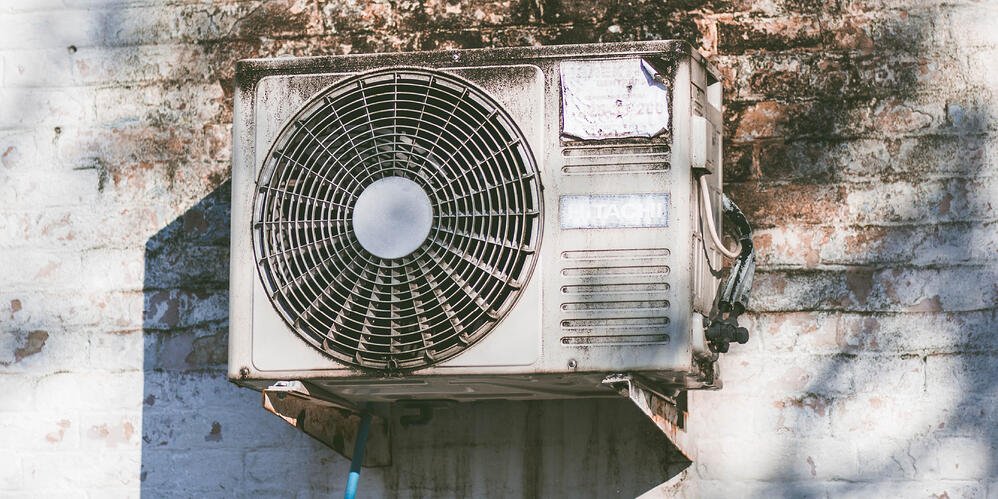Spring cleaning is a great way to freshen up your home for the warm months ahead. However, you should also incorporate essential home maintenance into your seasonal cleaning routine. Here’s the spring maintenance checklist we use to make sure our homes are in top shape.
Pipes/Drainage
The cold winter months can be hard on your plumbing systems. You want to ensure that your home is ready to handle large amounts of spring rainfall.
- Check your faucets and visible piping around your home for leaks.
- Check your toilet tank for leaks by adding 6 drops of food colouring to the tank water. If the colour leaks into the bowl within an hour, you should contact a plumber.
- Inspect the water supply and drainage hoses on your appliances. Replace leaking and damaged tubes with ones made of stainless steel for maximum durability.
- Test your basement sump pump by pouring a bucket full of water into the basin and watching to see if your pump activates and drains the water.
Check on your outdoor drainage systems to make sure water is properly flowing away from your house. Your sump pump discharge pipe and downspouts should be clear from debris and obstructions so they can divert water away from your home’s foundation. You should also clean your eavestroughs in the spring to help prevent your basement from flooding this season.
Windows and Doors
Winter is also hard on your windows and doors — inspect and repair them if necessary, so they keep the cool air in all summer and the cold air out come winter. Cleaning your windows and doors is an essential part of their spring maintenance.
- Remove and wash your window screens with a soft brush, warm water, and gentle soap. Lay the screens flat on a towel to dry.
- Wash both sides of the glass with a soft cloth and glass cleaner.
- Use mild soap and water to clean the interior and exterior of the frames and the edges of window sashes.
- Clean hardware with soap and water.
- Make sure the interior and exterior weep holes around your window and door frames are free of debris so they can drain moisture.
- Vacuum and use a soft brush to remove debris from crevices in frames, sills and tracks.
If you notice any weathering in the paint of your window sills or frames, sand them down and refinish them with primer and paint designed for use on exterior surfaces. Before you add a fresh coat of paint, scrape or sand away mould and mildew from wood frames. Inspect caulking for wear and replace it if necessary.
In addition to cleaning, repainting and recaulking, you should also inspect the hardware components of your windows and doors.
- Test locks, hinges, latches, operator arms, tracks, and rollers to make sure they’re operating smoothly.
- Lubricate locks, hinges, and rollers with a silicon-based lubricant.
- Use lithium grease lubricants for metal rotary drive hardware.
- Replace or repair malfunctioning or damaged hardware like loose hinge screws.
Spring and summer is also the best time to replace your windows and doors if they’re due for an efficiency or aesthetic upgrade.
HVAC/Furnace
If you have central air conditioning, your furnace works with your AC to circulate cooled air throughout your home. Make sure your furnace is ready to handle the transition from winter to summer operations.
- Change your furnace and air conditioner filters once a month or on a recommended schedule provided by your unit manufacturers or service technicians.
- Vacuum, dust, and sweep the areas around your furnace, vents and baseboard radiators to prevent debris from circulating through your home.
- When your furnace is off and your baseboard heaters have cooled down, remove their covers and thoroughly clean the metal fins underneath.
- Schedule a routine furnace check-up in the spring to ensure your heating system is efficient and safe. A qualified technician will make sure all components are in good shape, including the pilot light, belts, motors, bearings, gas or oil connections, and the heat exchanger.
Don’t forget to ensure the AC portion of your HVAC system is ready to handle the hot months ahead.
- Before you turn your AC on, remove any covers or lids that protect your outdoor condenser unit and heat exchanger coils during the winter.
- If the panels enclosing the electrical components of your condenser are missing, damaged, or out of place, then call a technician to repair them.
- Clear yard waste and other debris away from your unit’s system condenser coils.
- Clear any blockages from your air conditioning unit’s drainage hole.
- Open and clean debris from air vents and grills.
- Top-up refrigerant if levels are low, but make sure to check for leaks first.
- Ask your AC technician to inspect pipe insulation and the coil drainage hose, and repair or replace them if necessary.
After your initial AC system inspection is complete, turn the system on and make sure cool air is flowing through your registers. If the system isn’t working properly after several minutes, turn it off and consult with a professional.
Inspect your HVAC system at least twice a year—but expect quicker service in the spring and fall, when service technicians have to deal with fewer urgent calls. Biannual inspections and proactive maintenance ensure that you’re prepared for heating and cooling your home during the year’s most extreme weather conditions.
Smoke Alarms
In Ontario, having working smoke alarms installed outside of bedrooms and on every floor of your home is the law. House fires are most dangerous at night when people are asleep. Properly maintaining these fire detection devices is a crucial part of protecting your family and your home.
- Make sure you have a smoke alarm installed on the ceiling of each bedroom, in hallways outside of bedrooms, and on every floor.
- Replace batteries twice a year (when you change your clocks), or when you hear the low battery warning chirp from battery-operated alarms.
- Push the test button on each detector to make sure it’s working correctly.
- Clean your smoke detectors with a clean, dry cloth or compressed air like you would a computer keyboard.
- Check the manufacture date on your alarms and replace any that are over 10 years old.
- Smoke alarms that use both photoelectric and ionization technology provide the best protection against house fires.
Electrically connected alarms should also have backup battery power. When servicing these alarms, shut off the power to that area of your home. Some homes have electrically interconnected smoke alarms that will all sound when one is triggered to help alert you of a fire. You can also purchase wirelessly interconnected smoke alarms.
Carbon monoxide Detectors
Carbon monoxide detectors are also required by law in Ontario. Install CO detectors near sleeping areas and areas that contain fuel-burning appliances such as boiler rooms and garages.
Have potential carbon monoxide sources in your home regularly inspected by a qualified technician, including:
- Fireplaces and chimneys
- Automobiles
- Water heaters, portable heaters, and furnaces
- Clothes dryers
- Cooking appliances
Maintain, test, and replace your CO detectors like you do your smoke alarms. For more information on Carbon monoxide alarm installation, leak prevention, and CO detection: visit The Ontario Association of Fire Chiefs’ Carbon Monoxide information resource.
Catching up on home maintenance this season is a vital part of caring for your property. Now’s the time to ensure that essential systems in your home are safe and fully-functioning. When you finish, you can enjoy the summer that lies ahead with renewed peace of mind knowing your home is well maintained.



